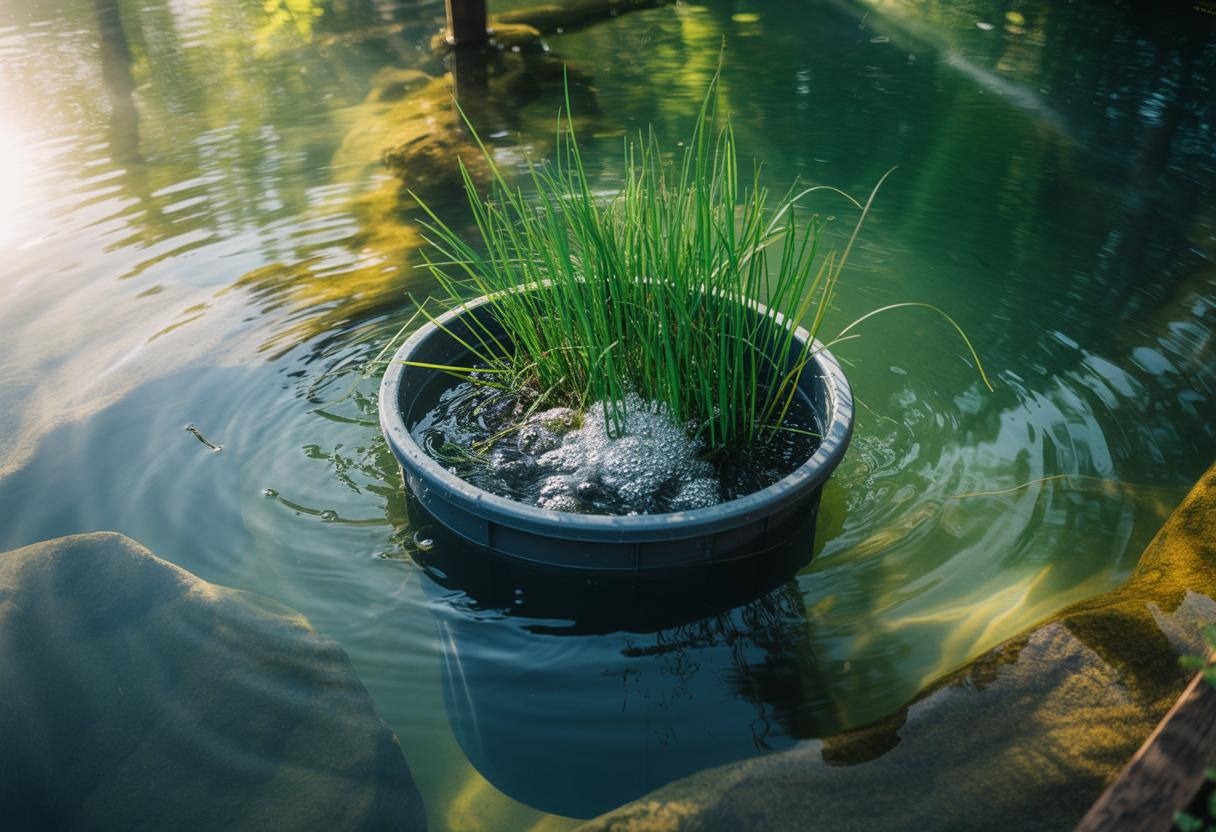Most homeowners spend hundreds on commercial pond filtration systems, but innovative DIY enthusiasts are creating highly effective water purification setups for under $100 using everyday materials like buckets, gravel, and native plants. These homemade systems not only slash costs by up to 70% compared to store-bought alternatives but also create thriving aquatic ecosystems that naturally maintain crystal-clear water.
The science behind budget-friendly natural filtration systems
DIY pond purification relies on three powerful natural processes working in harmony. Mechanical filtration through gravel and porous materials traps suspended particles and organic debris, while beneficial microorganisms establish colonies on these surfaces to convert harmful ammonia into harmless nitrates through biological filtration.
The third component, phytofiltration, uses aquatic plants like cattails and watercress to absorb excess nutrients that would otherwise fuel algae growth. This triple-action approach mirrors the same processes found in natural wetlands, making it remarkably effective at maintaining water quality without expensive equipment or chemical treatments.
Recent testing by pond enthusiasts shows these systems can reduce water turbidity by 50-80% while completely eliminating the need for costly algaecides or clarifying chemicals.
Surprising environmental and economic advantages over commercial options
Sustainability credentials that outperform expensive alternatives
Unlike energy-hungry commercial filters, DIY systems can operate entirely on solar power, eliminating ongoing electricity costs. The carbon footprint drops dramatically when using recycled containers and locally-sourced materials instead of manufactured plastic components shipped from overseas.
These natural systems also support biodiversity by creating habitat for beneficial insects, amphibians, and microorganisms. Similar to sustainable landscaping practices that benefit pollinators, DIY pond filters contribute to healthier backyard ecosystems.
Cost breakdown reveals shocking savings potential
A complete DIY bog filter system costs between $30-$100, compared to $150-$400 for comparable commercial units. Material costs break down to just $2-$20 for containers, $8-$30 for filter media, and $20-$50 for solar pumps. Even factoring in annual maintenance like media replacement, total five-year costs remain under $200.
This cost-effectiveness mirrors the trend toward DIY solutions for rising costs across multiple household categories, as families seek alternatives to expensive commercial products.
Building your own system with proven techniques
The most successful DIY designs follow a specific layering strategy. Start with 2-3 inches of coarse gravel at the bottom for mechanical filtration, add porous sponges or lava rock in the middle to host beneficial bacteria, then top with fine gravel and carefully selected aquatic plants.
However, one counterintuitive discovery challenges common assumptions: smaller systems often outperform larger ones in terms of water turnover efficiency. A single 20-gallon barrel can effectively filter a 200-gallon pond when properly designed, because the concentrated biological activity creates more intensive purification.
Proper plant selection requires understanding maintenance needs, similar to avoiding proper gardening techniques that prevent root problems. Native species like horsetail and arrowhead typically require less care while providing superior nutrient absorption.
Essential implementation tips for maximum effectiveness
Troubleshooting common performance issues
Clogging represents the biggest challenge for DIY systems. Backwash gravel monthly and replace sponge media every six months to maintain optimal flow rates. Ensure pump output matches pond volume using the rule of 10-20 gallons per hour for every 100 gallons of pond water.
Future-proofing with smart integration
Forward-thinking builders are incorporating IoT sensors for pH and nutrient monitoring, similar to cost-effective technology solutions that deliver impressive returns on investment. These additions transform basic DIY systems into sophisticated monitoring networks while maintaining budget-friendly operation.
Long-term value extends beyond immediate savings
The most compelling aspect of DIY pond purification isn’t just the upfront savings—it’s the ongoing independence from expensive replacement parts and service calls. As these natural systems mature, they become increasingly efficient and self-sustaining, often requiring minimal intervention after the first year of operation while continuing to provide crystal-clear water and thriving aquatic environments.
